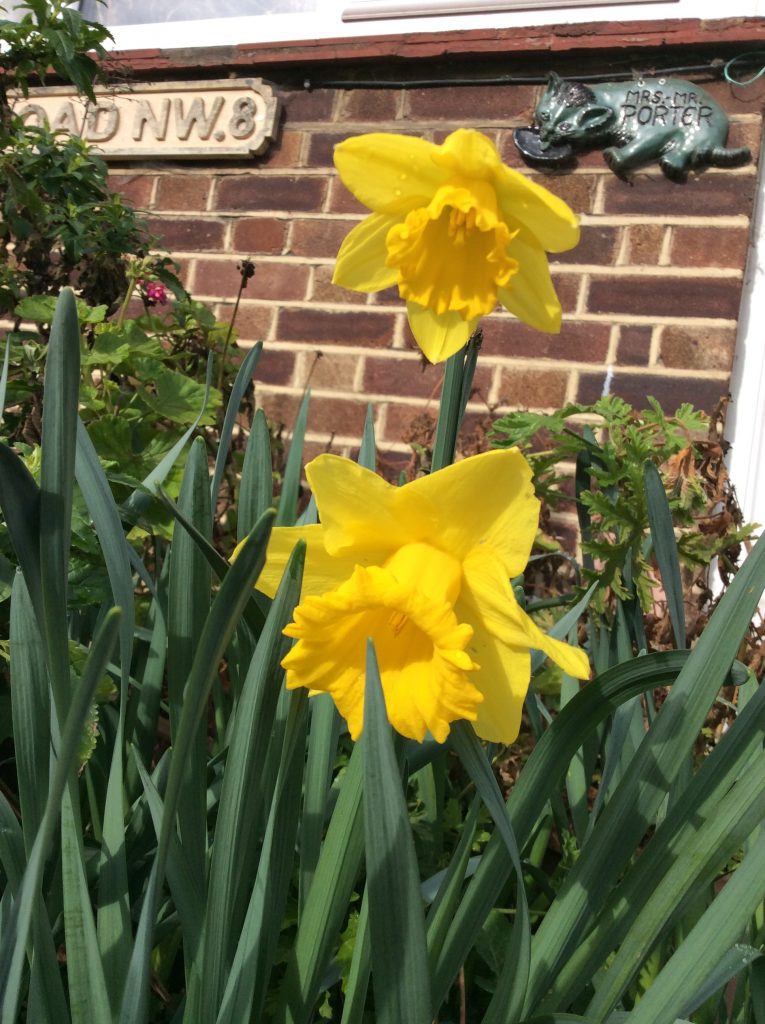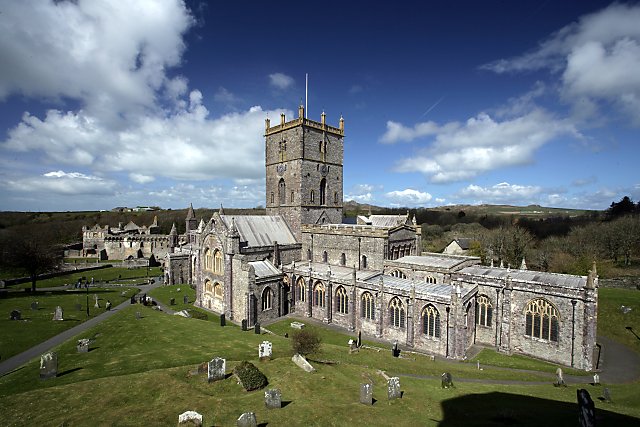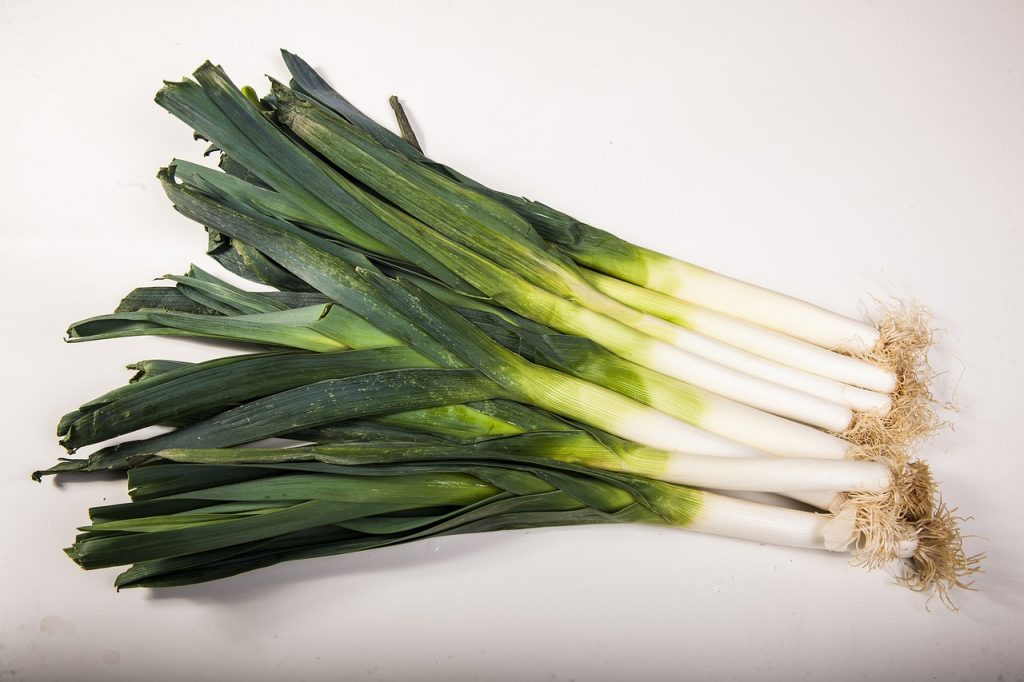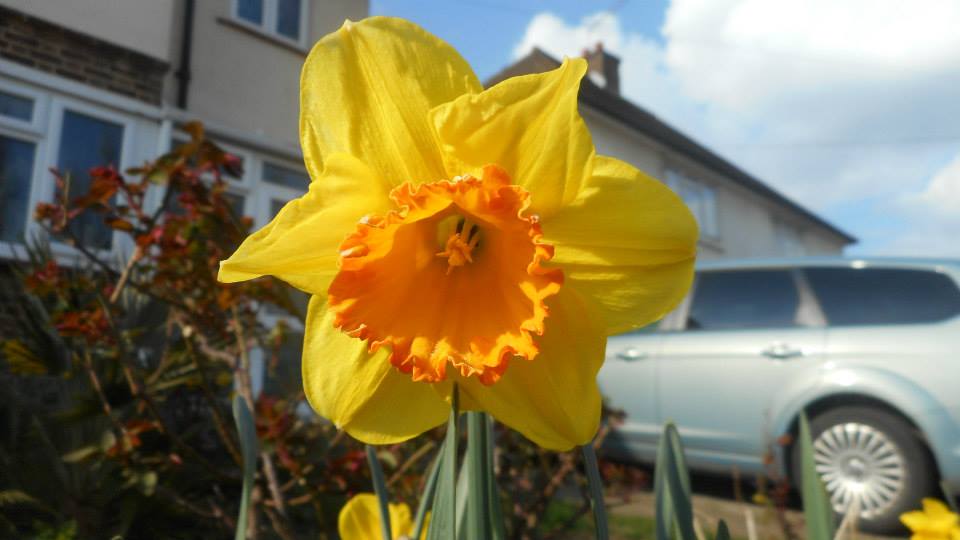Of Daffodils and Leeks – St.David’s Day, 1st March
This 1st March my front garden boasts 5 daffodils. Along with camellias and crocuses they are the first splashes of colour, after predominantly green British winter.

Daffodils are traditionally regarded to be the national symbol for Wales, along with leeks, dragons and St.David, whose day is also celebrated on 1st March.
St.David and leeks came together for Wales, according to legend, in 6th century, when the Welsh saint lived and performed miracles. This was the Dark Ages, when Anglo-Saxon ruled England. The term Dark Ages came about because Anglo-Saxons did not go for writing things down, and the majority of surviving written sources come from the latter part of Anglo-Saxon time, 9th-11th centuries. We know very little of what happened here after Romans left in 5th century, and for a long time the pagan Anglo-Saxons were regarded as uneducated savage lot, bent on wars and invasions. Through archaeological finds like Sutton Hoo we now know that they Ango-Saxon culture and trade were as sophisticated as in other time in history.

Back to St.David and Wales. David started a priest in a monastery in Henfynyw in Wales, where he was educated, later becoming a missionary and a bishop, then archbishop of Wales in 550. Starting from his early time in church he was performing miracles, like restoring the sight of St.Paulinus. He was a vegetarian and only drank water – his survival was a miracle in itself, as at this time in history water was the most dangerous drink of all, so full of bacteria that it was sure to kill you, unless coming straight from a clean spring. Legend has it that water springs appeared where St.David did anything of note (so he was OK with it, lucky chap!)
David founded 12 monasteries, showed examples of faith, like standing up to his neck in a cold lake while reciting scripture, revived people from the dead and travelled as far as Jerusalem on pilgrimage. He died, according to legend, at the age of 100, on 1st March, and was buried in St.David’s Cathedral in Pembrokeshire, in West Wales. In 12th century Catholic Church canonised David and declared him Patron Saint of Wales.

So, what about leeks – and daffodils? There is a story that during a battle between the Welsh Army (the Brits living in Wales at the time (6th century) were predominantly Christian, while invading Anglo-Saxons were pagans) and Anglo-Saxons, David (or it could be his spirit) advised the Welsh to wear leeks in their hats to distinguish themselves from the enemy. Leeks love growing in the Welsh climate and were plentiful in local monasteries, so the obvious plant of choice for a Christian!

William Shakespeare talks in Henry V about Welsh guards wearing leeks on St.David’s Day in memory of their saint.
The Welsh word for ‘leek’ is Cenhinen, and ‘daffodil’ is Cenhinen Pedr, literally meaning ‘Peter’s Leek’, so this is the popular explanation why daffodils came to be regarded as the national symbol of Wales,- they also must be more plentiful on the ground than leeks at this time of the year, and definitely look more jolly!


